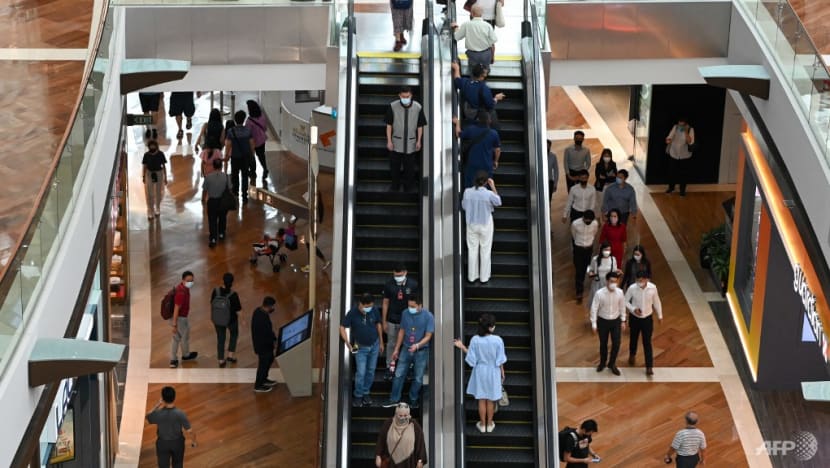Commentary: ‘No Buy 2025’ won’t fix your financial problems
The popular social media challenge meant to rein in needless purchases will backfire in the long run, says Erin Lowry for Bloomberg Opinion.

NEW YORK: A couple weeks into a new year and the shine of “new year, new you” has started to dim – but one personal finance trend, “No Buy 2025,” has taken hold for millennials and Gen Z on social media.
Whether it’s in response to a few years of post-pandemic “revenge spending” or just balancing the books after the holidays, people are locking down their wallets in the hopes of a changed relationship with consumerism, or at least a fattened-up savings account.
In a “no buy” (or “no spend”) challenge, participants aim to go an extended period without making purchases beyond the essentials. The rules can be modified to fit the participant’s life – many people continue to shell out for haircuts and other beauty routines, for instance – but the spirit of the challenge is to minimise discretionary spending.
NOBLE INTENTIONS ARE HARD TO SUSTAIN
There are plenty of aspirational tales of “no-buy” adopters who went on to make healthy long-term changes to their consumption and saving habits. But more often, noble intentions are hard to sustain.
That’s not surprising: Sudden and steep spending reductions are an extreme reaction to financial frustrations. The more pragmatic but less Instagrammable approach is to slowly shift toward healthier practices.
That means making small, manageable changes, one at a time. So, someone who wants to get better control over their spending could decide to boost their contributions to their retirement accounts by a percentage point or two, leaving less cash to deploy on everyday purchases.
If the “no spend” effort is aimed at paying off debt, it makes more sense to eliminate one consistent but unnecessary expense than to attempt to go cold turkey on all spending.
At this point, I should disclose that I tried a “no buy” challenge in 2019. In February – notably the shortest month – I cut my spending drastically and shared the experience on social media as a form of accountability and education.
For me, permitted spending included bills, groceries, public transportation, a weekly stipend of $25 for networking-related social activities and attending events to which I’d already committed.
Explicitly prohibited spending included coffees, ride share or cabs, drinks with friends, restaurants, ordering takeout, online purchases beyond essentials (e.g., food for my beloved mutt), shopping, and new events such as plays, concerts and movies.
Taking on the “no buy” challenge made me realise that it’s important to identify the emotional trigger behind a purchase. In my experience, cravings to buy a daily latte, an unfortunately trite example of mindless spending, were less about the delicious, frothy beverage and more about having interpersonal contact in my day as work-from-home writer.
The cost-benefit analysis wasn’t just about the value an afternoon latte brought to my day but the reward of getting out of my apartment, into fresh air, and interacting with adults. But participating in a “no buy” month did challenge me to consider other ways I could achieve a similar benefit without spending money on a coffee every day.
THE COST OF SOCIALISING
Engaging in meaningful social interactions without opening one’s wallet is one of the biggest hurdles of a “no buy” challenge. Socialising doesn’t have to involve spending money, but it often does – even if that’s just the cost of transportation to a free activity.
It’s usually easy enough to get loved ones to accommodate free activities for a few weeks or months, but eventually, friends might tire of adhering to a “no buy” participant’s restrictions. Spending moratoriums can quickly turn into unhealthy social isolation that takes a toll on mental health.
Building a social life around free interactions highlights a common source of financial pain: Other people. We often spend their money on behalf of others. Birthday dinners, weddings and performances are all ways people are asked to show up in support of a loved one.
Being there to celebrate someone’s milestone or achievement is a form of investing in a relationship. But it also can be a financial imposition.
People will wrestle with that challenge differently. But what’s important is to learn how to set boundaries that allow you to feel in control of your financial life.
That will be hard to achieve with a sudden suspension of spending. In fact, it’s more likely to leave you primed for a spending binge once a sense of deprivation takes hold or postponed outlays become more urgent. “No Buy 2025” can easily give way to “Spending Spree 2026.”
Those who want to try a “no buy” challenge should first commit to analysing their spending and their impulses to spend. It can help identify why they spend on certain things and what they truly need in the monthly budget to live a comfortable life.
Doing that extra layer of self-evaluation could be the difference in between building a fleeting cash hoard and setting yourself up for long-term financial stability.















